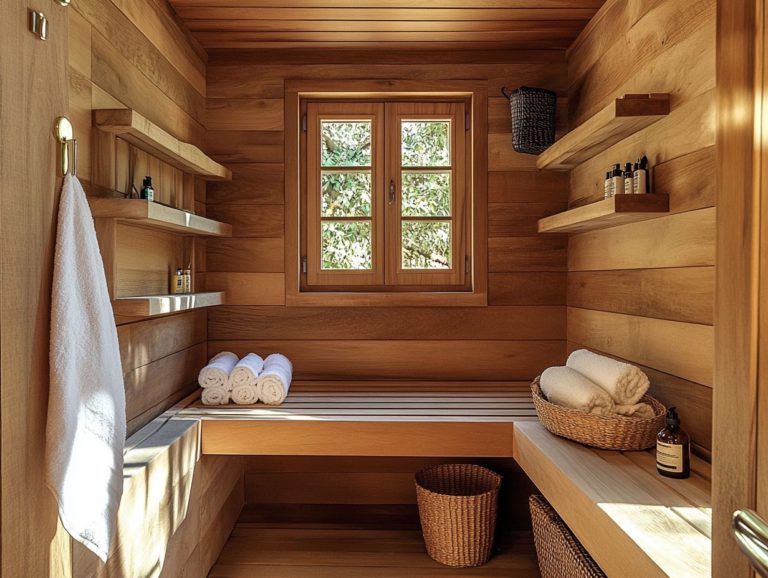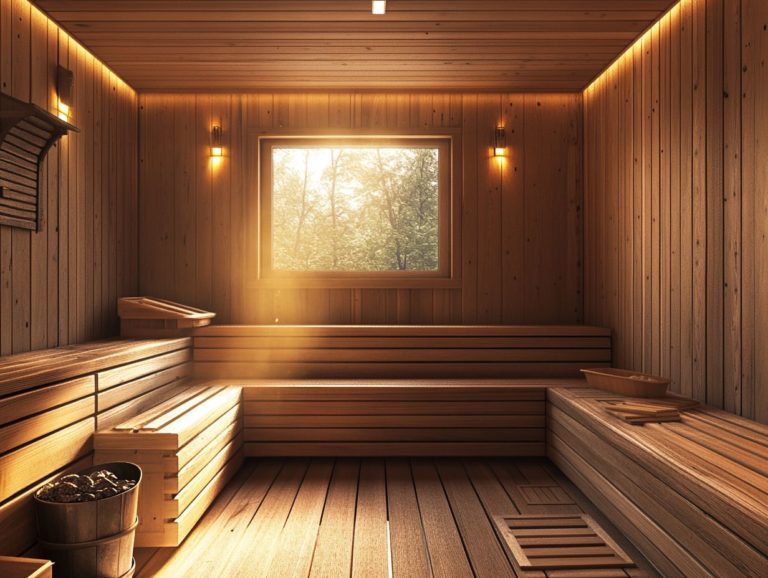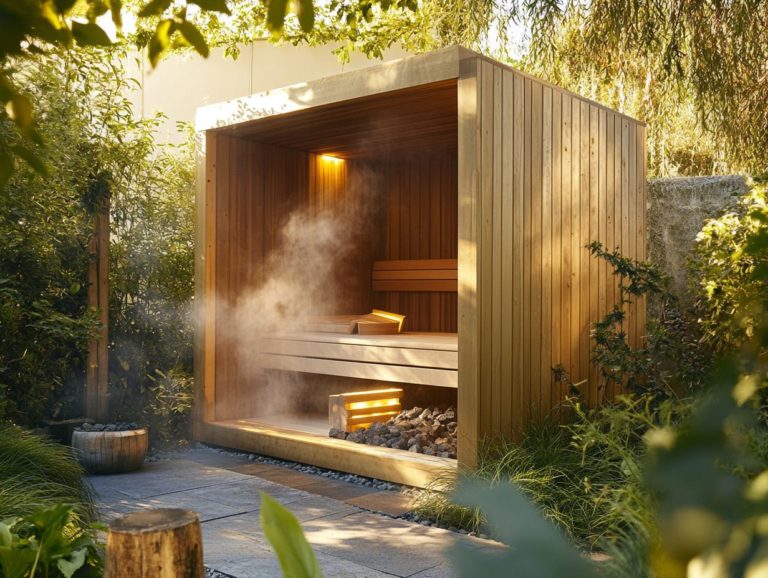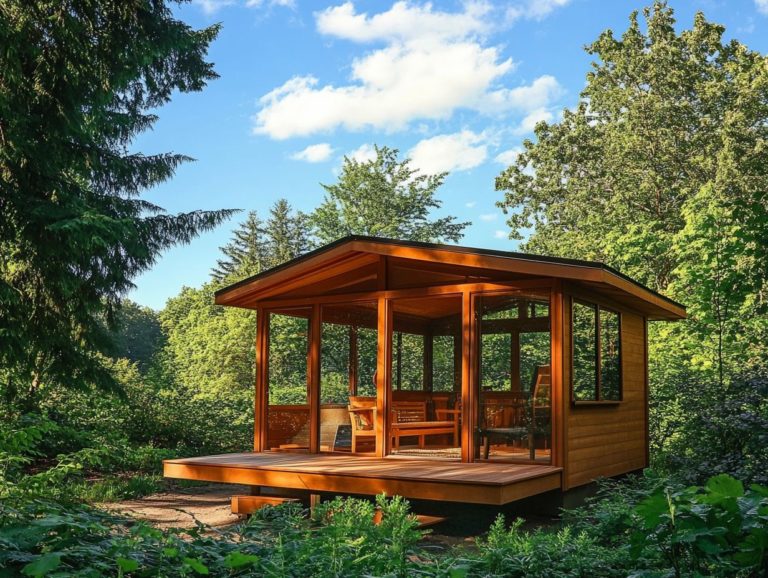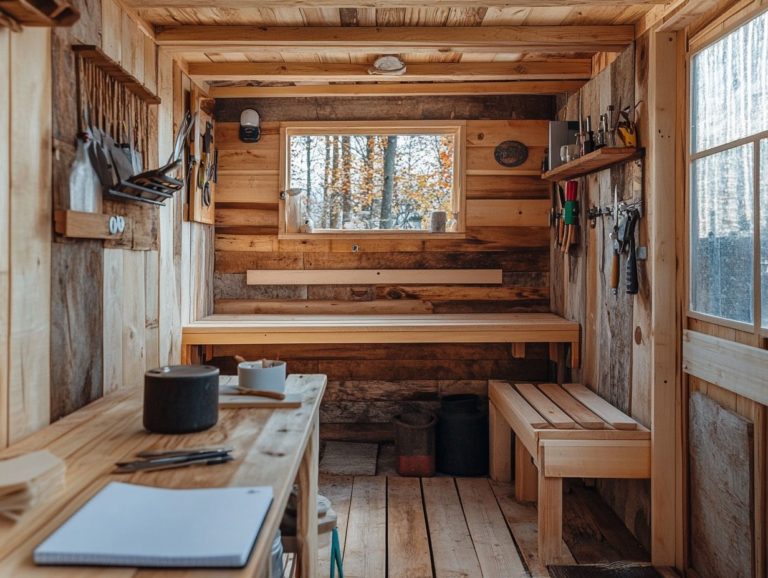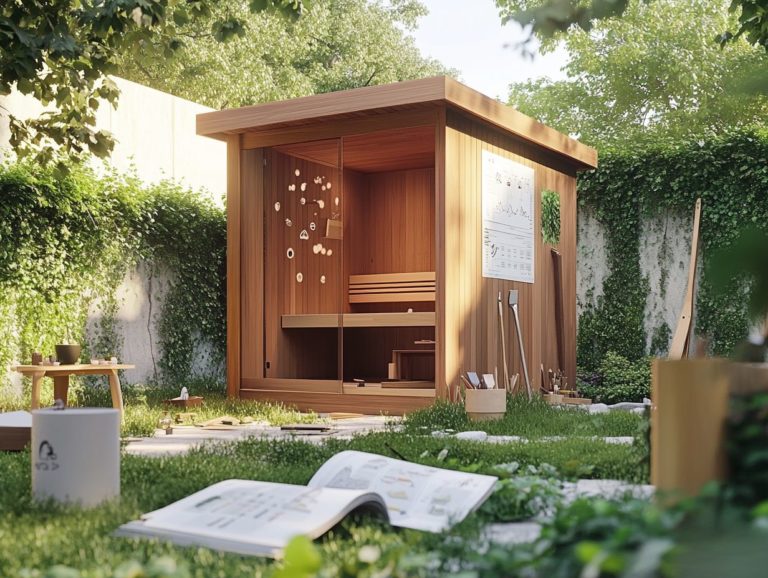“Choosing the Right Location for Your Home Sauna”
Thinking about adding a home sauna? It s more than just a way to relax; saunas offer numerous physical and mental health benefits.
Choosing the perfect location is vital for enhancing your sauna experience. This involves checking how much room you have and what you want to spend, as well as weighing the pros and cons of indoor versus outdoor setups. This guide will cover all the essentials you need.
You ll also explore popular locations, essential safety precautions, and tips for customizing your sauna to reflect your unique style. Get ready to transform your home into your own personal oasis!
Contents
- Key Takeaways:
- Benefits of Having a Home Sauna
- Factors to Consider When Choosing a Location
- Indoor vs. Outdoor Saunas
- Popular Locations for Home Saunas
- Precautions to Take in Different Locations
- Personal Preferences and Customization
- Frequently Asked Questions
- What factors should I consider when choosing the right location for my home sauna?
- Can I install a home sauna in my basement?
- Is it important to have proper ventilation in the sauna room?
- Can I install a sauna in a small space?
- Should I be concerned about the proximity of my sauna to water sources?
- What if I don’t have a dedicated space for a home sauna?
Key Takeaways:
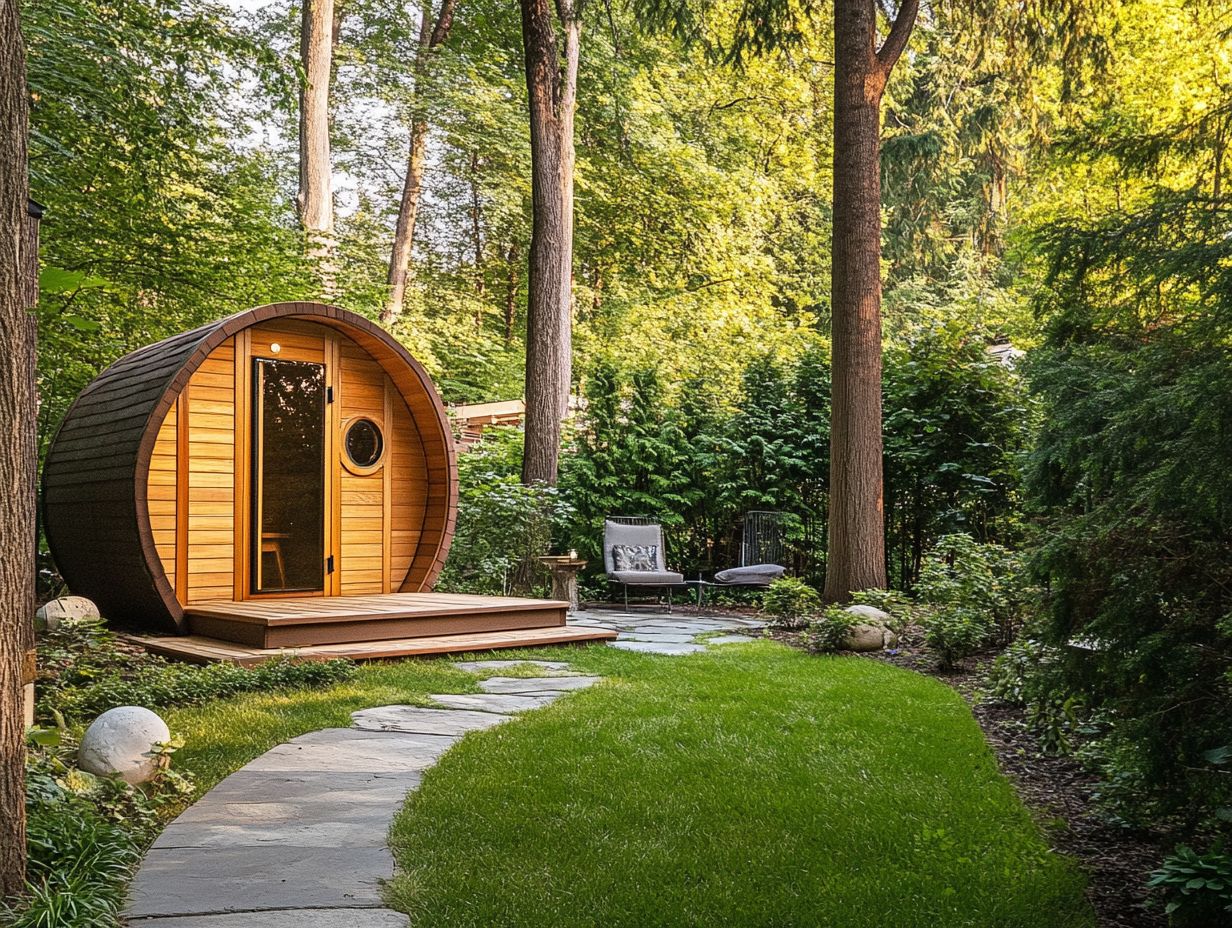
- A home sauna can provide both physical and mental health benefits, making it a valuable addition to any household.
- When choosing a location for your home sauna, consider the available space, budget, and necessary electrical and plumbing needs.
- Whether you opt for an indoor or outdoor sauna, each has its own pros and cons. It’s important to weigh these factors before making a decision.
Benefits of Having a Home Sauna
Imagine having your very own home sauna a sanctuary that elevates your physical and mental well-being. It transforms your space into a personal retreat dedicated to relaxation and health. As home saunas gain popularity, particularly from esteemed providers like Peak Wellness USA, you re likely to discover their unique benefits.
These saunas go beyond mere luxury; they seamlessly integrate into a balanced lifestyle, enhancing your overall wellness in ways you might not have anticipated.
Physical and Mental Health Benefits
The physical and mental health benefits of using a home sauna are truly remarkable. They offer everything from improved circulation to enhanced relaxation and stress relief.
By incorporating this therapeutic space into your routine, you can promote effective detoxification as your body sweats out harmful toxins. This leads to clearer skin and a boost in overall vitality.
Regular sessions help relax your muscles. This makes sauna use popular among athletes and those with active lifestyles, allowing them to experience the full sauna benefits.
Not only does this practice support cardiovascular health by increasing your heart rate and improving blood flow, but it also helps reduce moisture buildup in the body, alleviating discomfort. As a result, you may find yourself enjoying enhanced mental clarity and focus, contributing to an overarching sense of well-being that enriches your daily life.
Factors to Consider When Choosing a Location
Selecting the perfect spot for your home sauna requires a thoughtful evaluation of several key factors, such as available space, your budget, and the specific setup needs detailed in a comprehensive installation guide.
Choosing the right location will enhance your sauna experience and ensure you reap its full benefits.
Available Space and Budget
When planning for your home sauna, it’s essential to evaluate the available space in relation to your budget to ensure a seamless installation.
Start by carefully measuring the dimensions of the area where your sauna will be situated, keeping in mind factors like ceiling height and accessibility. Creating a layout can help you visualize the various sauna types that might fit perfectly in your space, including sauna stones for optimal heating.
Once you ve identified the space, it s wise to establish a realistic budget that covers not just the purchase price but also installation costs and any necessary renovations. You ll find various options traditional, infrared, or portable saunas that cater to different financial capabilities and spatial constraints.
For additional guidance, don t hesitate to consult a comprehensive installation guide for invaluable insights regarding assembly specifics, required materials, and maintenance tips for your sauna.
Electrical and Plumbing Requirements
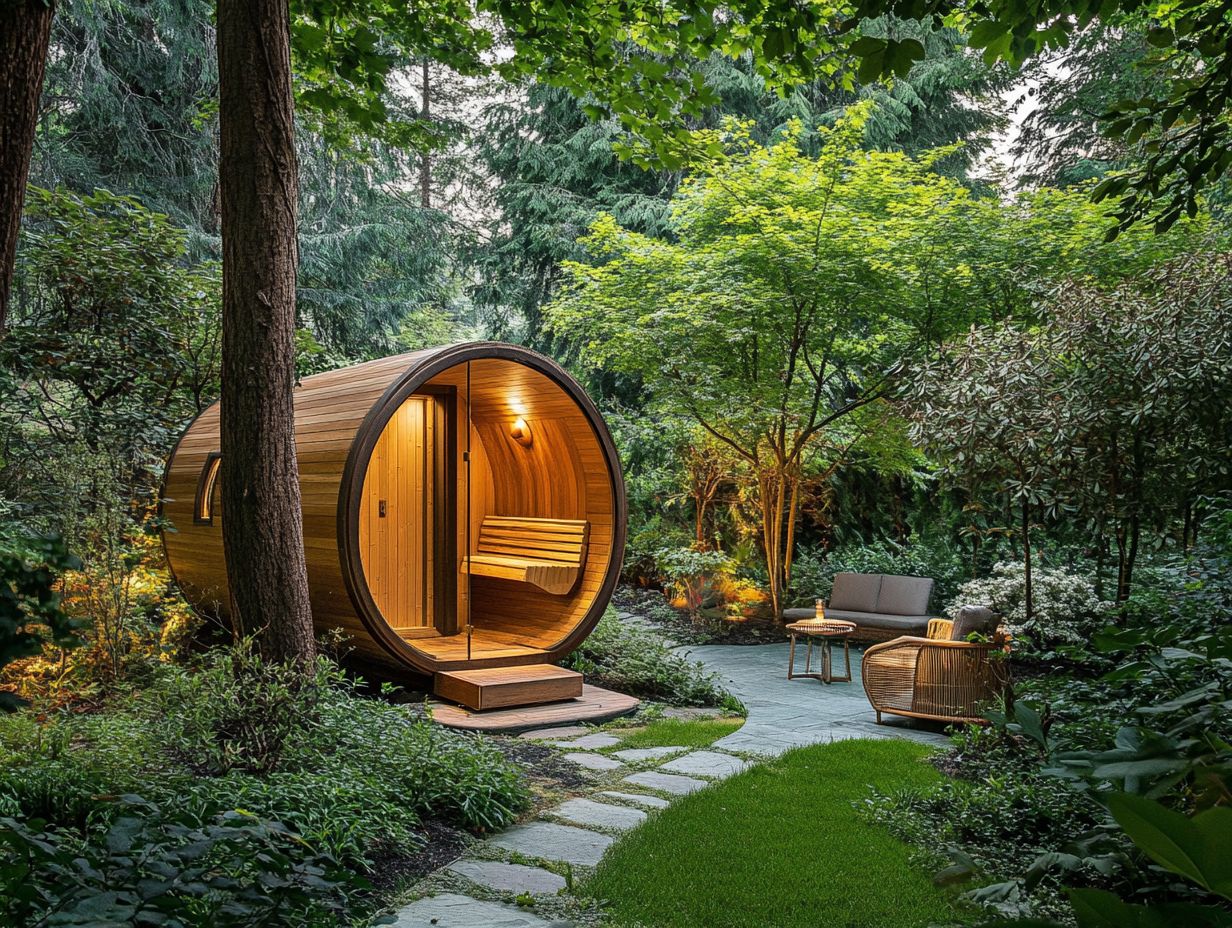
Understanding the electrical and plumbing requirements for your home sauna is crucial for safe and efficient operation, especially regarding the sauna heater and the necessary electrical outlet.
You ll want to be aware of the specific voltage needs, which typically range from 240 volts for larger units to lower specifications for smaller models. Make sure your electrical system can handle the load without tripping breakers. Safety is paramount; proper grounding connections (connections that prevent electrical shocks) and dedicated breakers are vital to prevent overloads.
In terms of plumbing, if you re installing a steam sauna, you may need a direct water supply and proper drainage systems, both of which will influence the overall installation process. Don t hesitate to consult a licensed electrician and plumber to ensure compliance with local codes and guarantee a safe and enjoyable sauna experience especially regarding proper ventilation and addressing moisture buildup.
Indoor vs. Outdoor Saunas
When choosing between indoor and outdoor saunas, understanding the advantages and disadvantages of each option can profoundly shape your home sauna experience and overall satisfaction.
Pros and Cons of Each Option
Evaluating the pros and cons of indoor and outdoor saunas enables you to make an informed decision that harmonizes with your lifestyle and available space.
If you re looking for the convenience of a quick relaxation session, indoor saunas offer unmatched accessibility, free from weather whims or travel hassles. They integrate seamlessly into your home s design, providing a cozy retreat just steps away from your daily routine.
However, be mindful of ventilation; without it, moisture buildup can become a concern, potentially leading to mold or damage over time, especially on wooden surfaces.
On the other hand, outdoor saunas provide a unique allure, inviting you to immerse yourself in the beauty of nature while basking in warmth. The scenic experience can be exceptional, but it does leave you vulnerable to the elements, making it less appealing during inclement weather.
Ultimately, each option has its distinct charm, shaped by your personal preferences and the specifics of your environment, and can be customized to fit your private space.
Popular Locations for Home Saunas
Homeowners frequently opt for prime locations to install home saunas, aiming to maximize convenience and elevate their overall wellness experience.
Common choices include the bathroom, basement, backyard, and garage. Each offers unique benefits tailored to personal preferences and lifestyle.
Bathroom, Basement, and Backyard
The bathroom, basement, and backyard are some of the most sought-after spots for your home sauna. Each presents its own set of advantages and considerations.
When evaluating these spaces for sauna installation, keep moisture in check to protect your sauna and your home! High humidity can seriously impact both your sauna and the overall condition of your home. A well-ventilated bathroom with proper sealing can help you avoid potential damage.
Basements often provide ample space but may require extra dampness management, like dehumidifiers, to keep the environment suitable for a sauna experience.
As for backyards, they offer a fantastic outdoor ambiance. However, it s essential to select a location with good drainage and some cover for unexpected showers. Regular maintenance such as clearing debris and checking seals will extend the lifespan of your sauna, regardless of where you set it up.
Precautions to Take in Different Locations
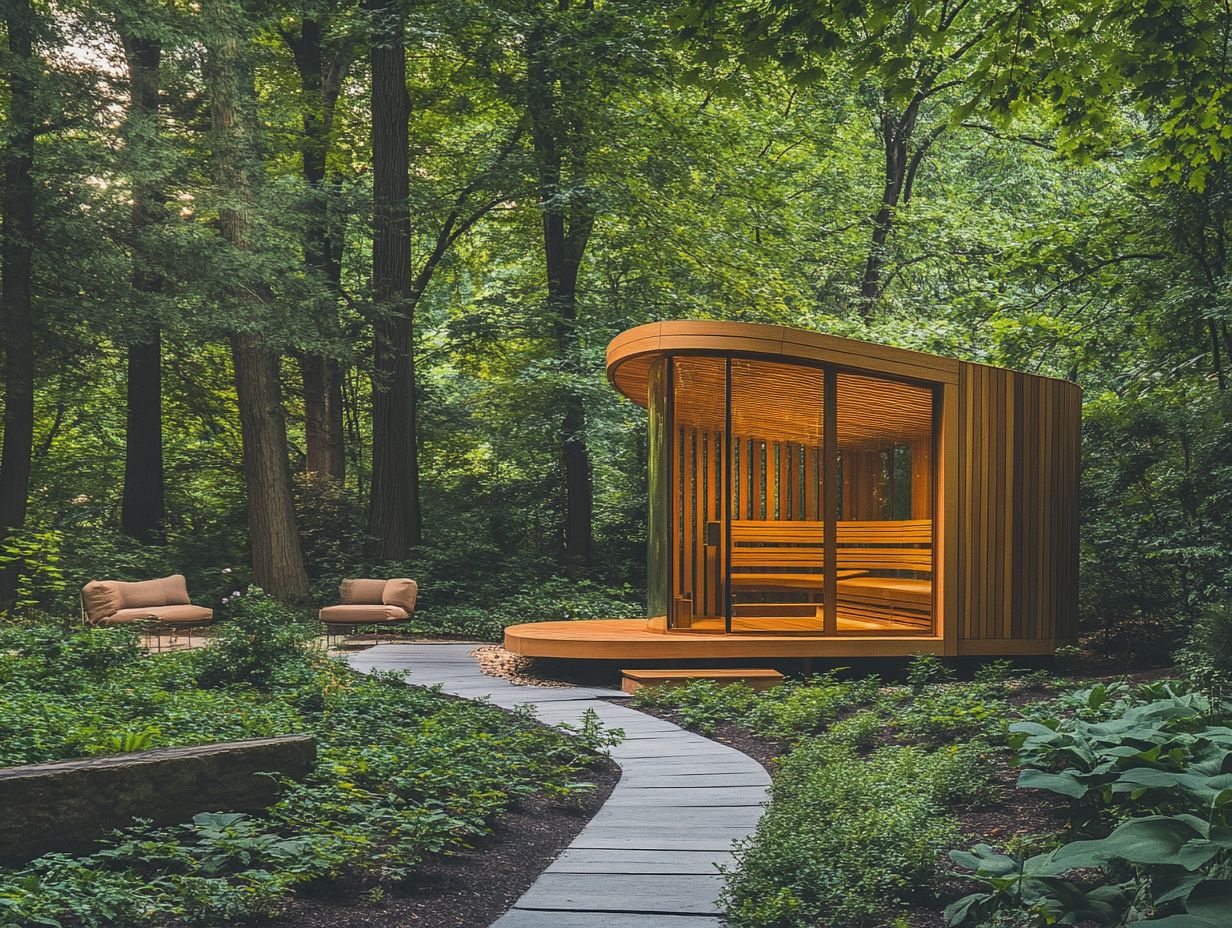
Taking the right precautions in various areas of your home sauna is essential for ensuring safety, facilitating optimal ventilation, and minimizing the risk of moisture buildup and complications like mold and mildew.
Ensuring Safety and Proper Ventilation
Safety and proper ventilation are crucial for the effective and secure operation of your home sauna. Inadequate airflow can lead to serious issues like mold growth or structural damage, compromising both the longevity of your sauna and the overall user experience.
Proper ventilation helps maintain a comfortable temperature and humidity level, creating a more enjoyable and therapeutic atmosphere.
When setting up your sauna, follow common safety protocols. Ensure electrical connections are installed correctly and adhere to separation guidelines to avoid heat-related hazards. Always ensure clear exit pathways safety should never be compromised!
Educating users on recognizing signs of overheating or dehydration is vital to ensure everyone can safely enjoy their time in this unique spa and wellness retreat.
Personal Preferences and Customization
Personal preferences and customization options are crucial in shaping the design and functionality of your home sauna. They enable you to create a space that reflects your unique lifestyle and enhances your overall enjoyment.
Incorporating Your Style and Needs
Incorporating your unique style and needs into your home sauna design elevates the experience, transforming it into a personal retreat that caters to your relaxation preferences and specific ventilation requirements.
Consider the aesthetic elements, like the type of wood and lighting fixtures, to create that serene atmosphere you desire. Functionality is just as important; features like adjustable temperature controls, built-in speakers for sound therapy, and even chromotherapy lights (the use of colors for healing) can significantly enhance therapeutic benefits.
Choosing accessories that resonate with your personal wellness goals like aromatherapy diffusers or specialized seating arrangements will further align the space with your individual comfort. Ultimately, this custom touch turns your sauna from a mere addition into a sanctuary that beautifully reflects your lifestyle and holistic aspirations.
Frequently Asked Questions
What are the best locations for a home sauna?
How do I manage moisture in my sauna?
What safety precautions should I take?
Ready to create your personal sauna sanctuary? Join the conversation below!
What factors should I consider when choosing the right location for my home sauna?
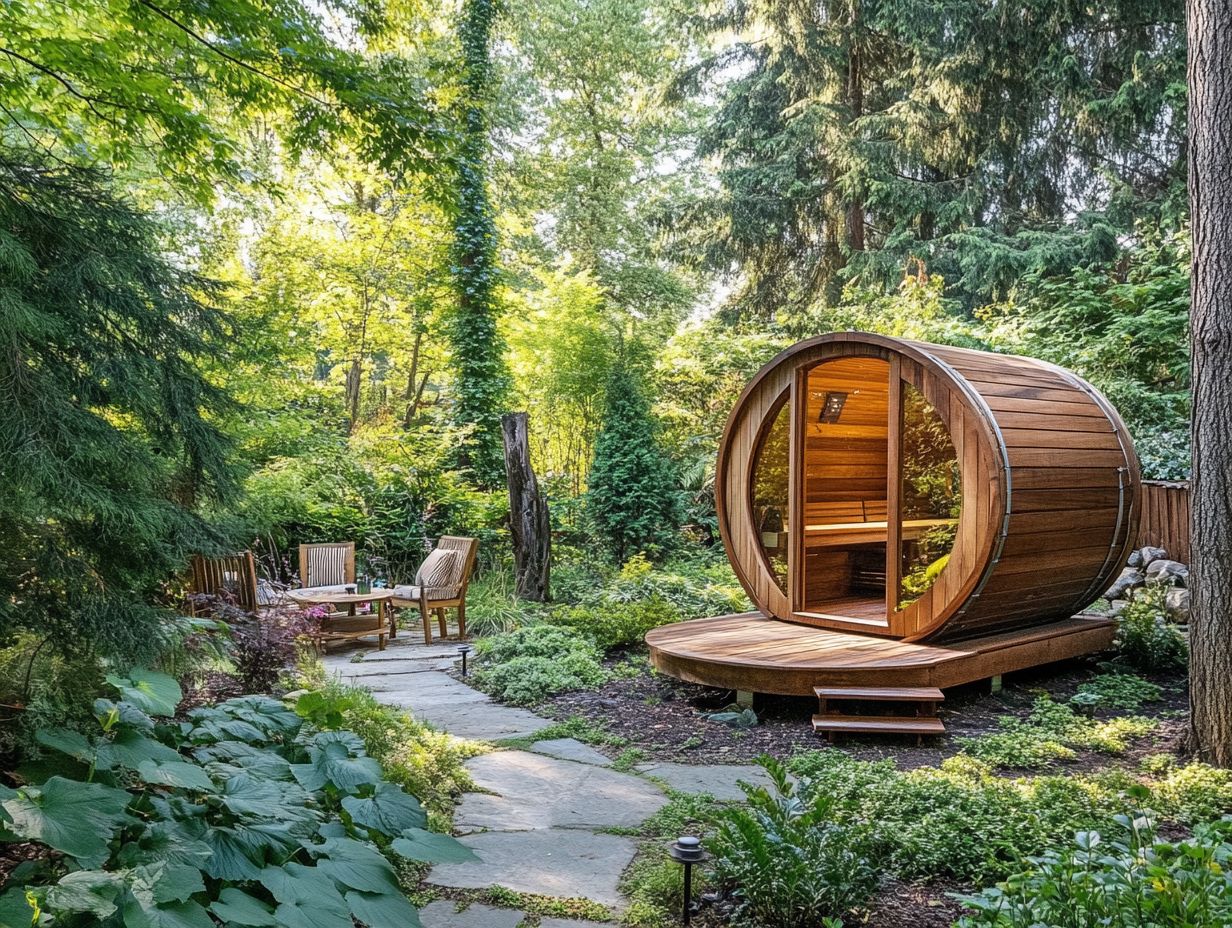
When choosing the location for your home sauna, consider factors such as available space, ventilation requirements, and proximity to an electrical outlet.
Can I install a home sauna in my basement?
Yes, you can install a sauna in a basement, garage, or even a bathroom. These locations often provide privacy and a cooler, insulated environment.
Is it important to have proper ventilation in the sauna room?
Proper ventilation is crucial in your sauna room. It helps prevent moisture buildup and ensures a comfortable and safe experience.
Can I install a sauna in a small space?
Yes, there are compact sauna options available that can fit in smaller spaces, such as a corner of a room or even a closet. Proper installation is important, so refer to an installation guide for the step-by-step process.
Should I be concerned about the proximity of my sauna to water sources?
Yes, it is recommended to keep your sauna at least 3 feet away from any water sources. The high temperatures and steam can damage nearby materials. Ensuring a moisture barrier is in place will help protect wooden surfaces.
What if I don’t have a dedicated space for a home sauna?
Don t worry if you lack a dedicated space for a sauna! Portable and outdoor sauna options are perfect for any available area. Just make sure you have proper ventilation and a suitable power source nearby for the best sauna experience!
Consider the common issues that may arise during installation, such as uneven heating or troubleshooting problems with the sauna heater and heating elements.

